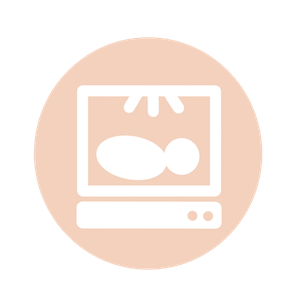Jaundice
Baby health

Jaundice is one of the most common conditions that can affect newborn babies. Around 6 out of every 10 babies develop it, but only around 1 in 20 babies has a blood bilirubin level high enough to need treatment.
What causes jaundice?
Jaundice is caused when the baby’s liver cannot break down red blood cells fast enough. This is then leading to an increase in the levels of bilirubin (bill-uh-roo-bin) in the baby’s blood. As a result, the skin of the newborn then turns yellow. Most hospitals therefore check infants for jaundice within the first 3 days of birth.
Types of Jaundice
The most common types of jaundice are:
- Physiological/normal jaundice: This mild form happens because the liver of a newborn is still maturing. It appears when a baby around 2 days old and disappears within 2 weeks.
- Jaundice of prematurity: This form is common in premature babies since they are even less ready to excrete bilirubin.
- Breastfeeding jaundice: Common when babies don’t get enough breast milk. This is not caused by a problem with the breast milk itself, but by the baby not getting enough of it. If a baby has this type of jaundice, it’s important to involve a lactation consultant.
- Breast milk jaundice: In around 1% of breastfed babies, jaundice is caused by substances in breast milk that can make the bilirubin level rise.
- Blood incompatibility: This happens if mother and baby have different blood types. The mother might then produce antibodies that destroy the infant’s red blood cells, which creates a buildup of bilirubin in the baby’s blood.
Signs and symptoms of jaundice
Jaundice usually appears around the second or third day of life and is usually the first visible in the face. The baby’s skin then appear yellow. Later the skin also turns yellow on the chest and stomach, and finally, the legs. It often also make the whites of a baby’s eyes become yellow.
How to detect jaundice
Doctors often check for jaundice before checkout and a few days after giving birth. If the skin of your child appears yellow, the doctor will probably take a small blood sample to measure your baby’s bilirubin level.
How to see jaundice more clearly
Jaundice can be hard to see, especially in babies with darker skin. If you’re unsure, press the skin on your baby’s nose, if your child has jaundice, the nose will appear more yellow.
Treatment if my baby has jaundice
Most cases of newborn jaundice don’t require treatment. Mild or moderate jaundice will go away within 2 weeks. For high levels of jaundice, phototherapy may be used. A commonly used rule of thumb is to start phototherapy when the total serum bilirubin level is greater than 5 times the birth weight. Thus, in a 3-kg infant, phototherapy is started at a bilirubin level of 15 mg/dL. If a baby has severe jaundice that hasn’t responded to other treatments, a blood transfusion may be required.
Verified:
Dr. Wanwadee Sapmee Panyakat (OB-GYN), license no. 41208 (7 March 2020)



